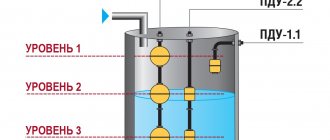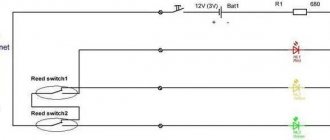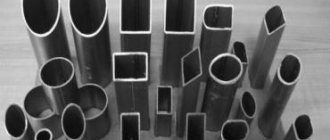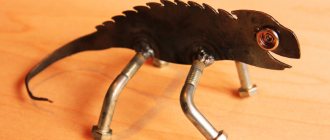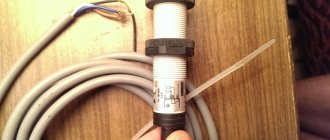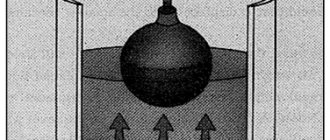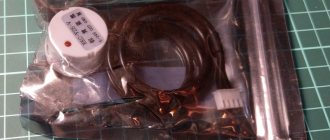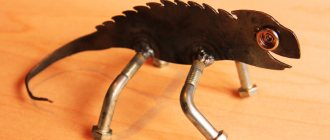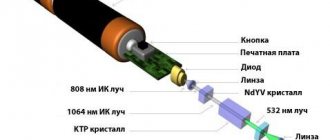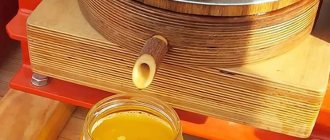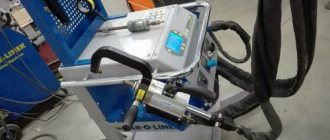In industry and everyday life, there is always a need to determine various levels in containers. For these tasks, level sensors of various designs are used. Depending on the filling environment of the tank, one or another sensor is used; sometimes, for the sake of simplicity and saving money and time, combined sensors are used, that is, made by hand. These are simple designs that use completely different types of sensors. Basically, such sensors are used where there is no easy access to the measurement environment or the measurement location is very aggressive for human health.
Types of level sensors
- float sensors are the simplest in design, having the widest distribution, combined with an electric relay, they represent a different type of float attached through a wire, thread, or rigidly to a contact petal, which closes when the position of the float changes.
- Capacitive level sensors are plates located on both sides of a tank with material. The principle of operation is to change the capacity depending on the distribution of the amount or composition of the material in the tank. Basically, such sensors are used to determine the level of bulk materials.
- Radar level sensors operate on the principle of “emitter - receiver of frequency waves”, the surface of the material reflects the radiation of the sensor, the receiver picks up this radiation and compares the emitted signal with the reflected one and determines the level in the tank based on the frequency shift. The level is determined by comparing the frequency time shift.
- Ultrasonic level sensors operate on the principle of radar, only ultrasound is emitted. Similar to radar, the difference between the signal emitted and reflected is compared and the distance to the surface of the material (liquid) is calculated.
- hydrostatic level sensors work by measuring an indirect quantity - the pressure of a liquid column. The pressure is proportional to the level of liquid in the reservoir.
Most modern level sensors have an electronic relay with a converter in their design. The electronic circuit is designed to convert the measured value into a standard signal. The signal can be analog or discrete. Analog can be a current 0..20mA and a signal called a current loop 4..20mA or a voltage 0...5V, 0..10V.
Level sensors are used to protect the pump motor from dry running; they regulate the motors of well pumps that fill any water containers and more in cold and hot water supply systems.
Device Features
No fuel level sensor can give completely accurate readings. For example, placing a tank in the sensor will not immediately give the correct fill signal. The numbers reach the desired level after some time.
The operating principle of the FLS boils down to selecting the signal that corresponds to the actual level of flammable material. The devices operate with either analog or digital signals. Analog sensors cannot boast of high accuracy, as a result of which they are used very rarely in any technology. More accurate digital sensors can “translate” the analog signal into digital information, which is corrected for measurement errors, some of which are caused by tank geometry and uneven fuel distribution. The most important stage of their work, and also associated with significant assumptions, is the stage of physical measurement.
DIY water level sensor
Let's see, using the example of pumping water from a pit, how we can control the automatic cycle of maintaining the water level not higher than the required one.
We have a pit with a very dirty-looking liquid consisting of water and impurities of coolant for the cutters of a metal-cutting machine.
All types of sensors were considered, however, in terms of price and ease of execution, a combined design was suitable, consisting of a wire three meters long (the depth of the pit), attached to a float (a large plastic container with air), on the surface the wire is attached to a spring with a petal.
The signal is taken as a conventional discrete 24V signal from a conventional inductive sensor. He works on the petal. When the water level in the pit rises, the float rises, weakening the spring. A petal is attached to the end of the spring; it rises due to the extension force of the spring. The petal, in turn, receives feedback from the inductive sensor, feeding the pump motor relay to the coil, causing it to pump out water from the pit. In order to avoid frequent switching on and off of the engine, in the sensor-coil circuit there is a switch-off delay relay set to 10 minutes.
Thus, the next time the sensor is triggered, the relay will work again and the cycle will repeat.
Of course, to protect the engine from dry running, it is advisable to install a leakage sensor in the pipe through which the emulsion is pumped out. But in our case, simplicity of design was important. Instead of an inductive sensor, you can use two plates in contact with each other, which will be even more economical.
If water or other liquid has a homogeneous composition, then a metric single-electrode level sensor can be used.
For example, DU-1N, designed for measuring levels in various types of liquid. The sensor can operate over a wide temperature range. The body is not subject to corrosion and is made of high quality stainless steel. Ceramic and fluoroplastic are used as insulation, this provides excellent insulating protection. Resistant to many mechanical loads. The measurements are independent of liquid density. And does not require additional care during operation.
Features of application
The above types of FLS are contact ones. Contact sensors are too unreliable for measuring fuel levels such as ethanol, biodiesel and methanol. The fact is that the moving elements are coated with oxide. As a result, sensor readings are no longer accurate. The same thing happens in tanks filled with gasoline, but oxidation occurs more slowly. If the car uses non-traditional fuel, then a non-contact FLS, which is a magnetic position sensor ( MAPPS ) placed in a sealed container, is placed in its tank.
Whatever type of sensor it is, it has one feature: the float begins to fall after the fuel itself drops below a certain level. This implies a certain measurement error, which is highest as the fuel tank is filled.
Selection of level sensors
When choosing level gauges, they are guided by the following goals:
- Type of liquid being measured. Its characteristics, we find the passport density of the material being measured. What substances does the substance belong to, is it dangerous for humans or not.
- The material of the container in which the measurement will be made. The operating principle of the level gauge depends on it .
- Do you need an analog standard signal from the sensor or is it preferable to work as a relay? Some models have built-in circuitry to process the analog signal and convert it into a bit logic signal.
- It is necessary to know the limits of the measured value; in very long vessels, with a rapidly changing volume, the float design will not work stably. In this case, a radar level gauge is preferable.
- Modern level meters are equipped with a liquid crystal screen that displays parameters in real time and the ability to save maximum and minimum values. In the sensor parameters, several response levels are specified, each level having its own discrete output. The density of the environment is set in the settings.
- Sanitary standards for the area of application are taken into account. For example, in the food industry, high demands are placed on measuring water and beverages. Definitely stainless steel.
- The need for certificates. For example, some meters must be checked and approved by Rostekhnadzor for use at hazardous facilities. Some require approval from the Sanitary and Epidemiological Service, mainly for water and food products.
- Suitability of sensors for use in explosive atmospheres . These are used in petrochemical production. The manufacturer guarantees that due to such systems, during the entire service life, there will be no ignition of the flammable environment in which it is located.
- It is necessary to take into account the possibility of mechanical influences on the system, vibration, electromagnetic waves, and aggressive environments.
- The presence of temperature differences in the system, the maximum possible conditions.
- How important is the accuracy of level measurements, one of the most important parameters.
Examples of sensors, their parameters and scope of application
- Capacitive sensor DE-1 . Scope of application: in explosive environments of the metallurgical, chemical industries, etc. Monitoring level values, as well as temperature values of liquid media and bulk materials. Power supply is 8 .. 30V DC. used in emergency protection systems.
- ESU-1K level switch . The body is made of fluoroplastic and steel. Placed in explosive environments. The power source is located outside the hazardous environment. power supply 127…220V. Measurement of liquid materials such as water, alcohol, oil. The sensing element is placed in the material being measured, the operating principle is capacitive. Aluminum alloy power supply material.
- RU-305 level relay . Monitoring the status of liquid levels. Explosion-proof design. Use temperature -50..+50C. Not used in chemically aggressive environments. They work strictly in one position, tilting is not allowed. The measurement works by moving a float with a magnet. Works by triggering reed switches. Measurement accuracy up to 5mm. power supply 220V, current 1A.
- Level switch SU-100 . Level measurement of liquid and solid substances. Supply voltage 24V. The composition contains an electromagnetic relay; the sensitive element is placed directly into the liquid being tested. Measure the limiting position of solids: sand, gravel, grains.
- Rosemount 5600 radar level transmitter . Non-contact measurement of any type of substance. Correct installation is important; the accuracy of measurements depends on this. Power supply 24-240V. The device does not tolerate electromagnetic radiation. Explosion-proof housing. Has a display unit. A proprietary application has been developed for the level gauge to simplify configuration. Used to measure temperature in a container. For proper full use of the level gauge's capabilities, qualified setup of the device is required. It is necessary to use the following parameters when setting: the distance between the reference point and the level;
- internal diameter of the pipe;
- level gauge connection length.
There are a huge number of varieties of sensors on sale. The choice must be made on the most cost-effective option for a specific project.
Conclusion
FLS is not an entirely necessary element of a car, if you think about it that way. However, drivers are so accustomed to fuel level sensors that using vehicles without them becomes uncomfortable. However, the device itself is not highly reliable. It is characterized by many “sores”, some of which are transferred to monitoring systems. If desired, you can replace and adjust the sensor yourself. We still recommend entrusting the work to the experts at a service station - it’s faster, and there’s no chance of damaging anything. When purchasing a new device, we strongly recommend that you pay attention to either the original or an analogue from Germany. As practice shows, in the vast majority of cases, original automobile sensors are head and shoulders above analogues even from the middle price segment, and only the products of ]Bosch[/anchor] and several other Japanese companies can compare with them.
Nuclear (radiation) sensors
Despite the high efficiency of this solution, it remains a method that is used last, due to its high cost and specialized requirements. The method is very simple: a radioactive source of gamma radiation is placed on one side of the tank. On the other side, sensors similar to a Geiger counter are mounted to read the level. The contents of the tank, solid or liquid, absorb gamma rays in a predictable manner, allowing the level to be determined electronically. The accuracy of the measurements is determined by the number of sensors, so this method is usually used to record the upper and lower limits.
Radiation sensors do not require penetration into the volume of the product, or even into the tank at all, so this method is especially valuable for installations with high pressure and temperature, when processing expensive products, and also when it is impractical to rework existing equipment. However, given the radioactive source's ability to radiate through a typical steel tank, handling it will require special permits and operator training, so this technical solution requires careful consideration and preparation.
Inexpensive industrial devices
There are also inexpensive models of liquid level control sensors, which can be purchased in stores for about 2 thousand rubles
Various modifications of ARS
Such float sensors are usually used in reservoirs. The measuring head in devices of this type is small, which makes the device compact. The load capacity, according to the operating instructions, can reach 1 ampere. The wire entry into the devices is sealed. The body is made of plastic. The operating differential is 45 degrees. The maximum pressure for correct operation of devices is 3 bar. The cost is about 2 thousand rubles, depending on the modification.
“Crystal” container filling control devices
These float type sensors can be used in harsh environments. Very compact. The measuring head is 2.3 centimeters in diameter. The maximum pressure for correct operation reaches 3.3 bar. The wire input is made in the form of a plastic seal. The devices are equipped with a spark protection barrier. Can work in hot environments. The price is slightly higher than 2 thousand rubles, depending on the modification.
Burkle devices
These devices are designed for contaminated environments, but can also be used in clean ponds and clean water tanks. The maximum pressure for correct operation is 4.1 bar. The maximum possible load is 1A. It is possible to work in environments heated to 170 degrees, in liquids with a density of up to 3 kg per square meter. cm. The average price of the device is 2,200 rubles and depends on minor modifications made by the manufacturer.
Fine Tek and Wilo sensors
These float type devices can be used in harsh environments. They are used for drainage purposes and can also be installed in wells. The sensors can withstand loads up to 2 amperes. The measuring heads are compact and measure 2.5 cm. The wire inputs are made in a specialized seal. The cases are made of heat-resistant plastic. The devices are equipped with fuel probes, which allows their use in flammable environments. The price ranges from 2 thousand to 2500 rubles and also depends on the modification.
Wilo float-type devices are the cheapest, but are not functionally designed for aggressive environments and can only be used in clean water. The sensors have small measuring heads and are compact in appearance. The maximum temperature of use is 140 degrees. The operating differential is only 30 degrees. The maximum operating pressure does not exceed 2 bar. The price of such sensors fluctuates around 1900 rubles.
Types of fill level monitoring products
Liquid level monitoring devices are divided into two main types: contact and non-contact.
Proximity sensors: description
They are used mainly in industrial processes and are divided into ultrasonic devices, capacitive, electrode, operating on the hydrostatic principle, and so on.
Such devices are used not only in water, but also in other environments, including aggressive ones. The circuit includes, in addition to the sensor itself, which is immersed or installed on the walls of the tank, a control controller, which is installed in a separate control unit outside the tank. Such systems are complex and expensive, and, therefore, unprofitable for use in domestic conditions. To control the filling level of the tank with water necessary for irrigation or plumbing, it is more advisable to use simpler and cheaper devices.
Characteristics of contact devices
The most common devices for monitoring the filling of tanks in this type are float-type contact sensors assembled on the basis of reed switches. The devices are simple, reliable and cheap. They are divided according to their location in a container with liquid:
- Vertical arrangement. A rod with a float and a magnet moves along a vertical tube on which the reed switches for turning the pump on and off are located.
- Horizontal placement. Installed in the upper or lower part of the tank wall. As the tank is filled, the float with a magnet attached to it rises on a transverse rod to the reed switch, which switches off the power supply to the pump.
Float sensors for filling control with various design features can be purchased in stores. The choice depends on the specific installation location of the device and operating conditions.
